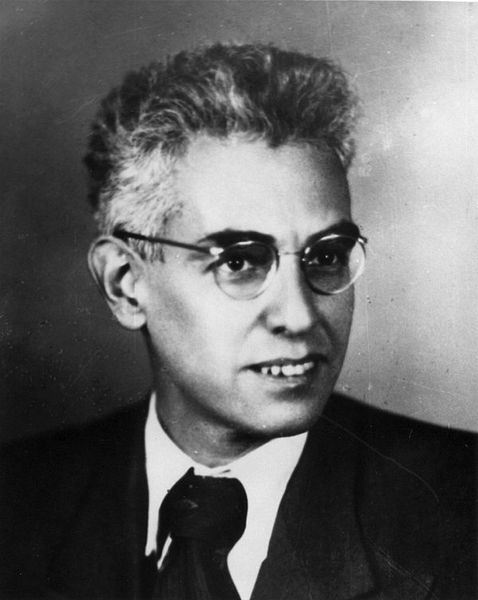<Back to Index>
- Neuropsychologist Alexander Romanovich Luria, 1902
- Composer Luigi Arditi, 1822
- President of South Korea Choi Kyu-hah, 1919
PAGE SPONSOR

Alexander Romanovich Luria (Russian: Алекса́ндр Рома́нович Лу́рия; 16 July 1902 – 14 August 1977) was a famous Soviet neuropsychologist and developmental psychologist. He was one of the founders of cultural - historical psychology and the leaders of the Vygotsky Circle.
Luria was born in Kazan, a regional center east of Moscow, to Jewish parents. He studied at Kazan State University (graduated in 1921), Kharkov Medical Institute and 1st Moscow Medical Institute (graduated in 1937). He was appointed Professor (1944), Doctor of Pedagogical (1937) and Medical Sciences (1943). Throughout his career Luria worked in a wide range of scientific fields at such institutions as the Academy of Communist Education (1920 - 30s), Experimental Defectological Institute (1920 - 30s, 1950 - 60s, both in Moscow), Ukrainian Psychoneurological Academy (Kharkov, early 1930s), All - Union Institute of Experimental Medicine, Burdenko Institute of Neurosurgery (late 1930s), and other institutions. In the late 1930s, Luria went to medical school. Following the war, Luria continued his work in Moscow's Institute of Psychology. For a period of time, he was removed from the Institute of Psychology, mainly as a result of a flare - up of anti - Semitism and shifted to research on mentally retarded children at the Defectological Institute in the 1950s. Additionally, from 1945 on Luria worked at the Moscow State University and was instrumental in the foundation of the Faculty of Psychology at the Moscow State University, where he later headed the Departments of Patho- and Neuropsychology.
While a student in Kazan, he established the Kazan Psychoanalytic Association and exchanged letters with Sigmund Freud.
In 1923, his work with reaction times related to thought processes earned him a position at the Institute of Psychology in Moscow. There, he developed the "combined motor method," which helped diagnose individuals' thought processes, creating the first ever lie - detector device. This research was published in the US in 1932 (published in Russian for the first time only in 2002).
In 1924, Luria met Lev Vygotsky, who would influence him greatly. Along with Alexei Nikolaevich Leont'ev, these three psychologists launched a project of developing a psychology of a radically new kind. This approach fused "cultural," "historical," and "instrumental" psychology and is most commonly referred to presently as cultural - historical psychology. It emphasizes the mediatory role of culture, particularly language, in the development of higher mental functions in ontogeny and phylogeny.
Luria's work continued in the 1930s with his psychological expeditions to Central Asia. Under the supervision of Vygotsky, Luria investigated various psychological changes (including perception, problem solving, and memory) that take place as a result of cultural development of undereducated minorities. In this regard he has been credited with a major contribution to the study of orality. Later, he studied identical and fraternal twins in large residential schools to determine the interplay of various factors of cultural and genetic human development. In his early neuropsychological work in the end of 1930s as well as throughout his postwar academic life he focused on the study of aphasia, focusing on the relation between language, thought, and cortical functions, particularly on the development of compensatory functions for aphasia.
During World War II Luria led a research team at an army hospital looking for ways to compensate psychological dysfunctions in patients with brain lesions. His work resulted in creating the field of Neuropsychology. His two main case studies, both published a few years before his death, described S.V. Shereshevskii, a Russian journalist with a seemingly unlimited memory (1968), in part due to his fivefold synesthesia. This case was presented in a book The Mind of a Mnemonist. Luria's other most well known book is The Man with a Shattered World, a penetrating account of Zasetsky, a man who suffered a traumatic brain injury (1972). These case studies illustrate Luria's main methods of combining classical and remediational approaches.
The Luria - Nebraska is a standardized test based on the theories of Luria regarding neuropsychological functioning.